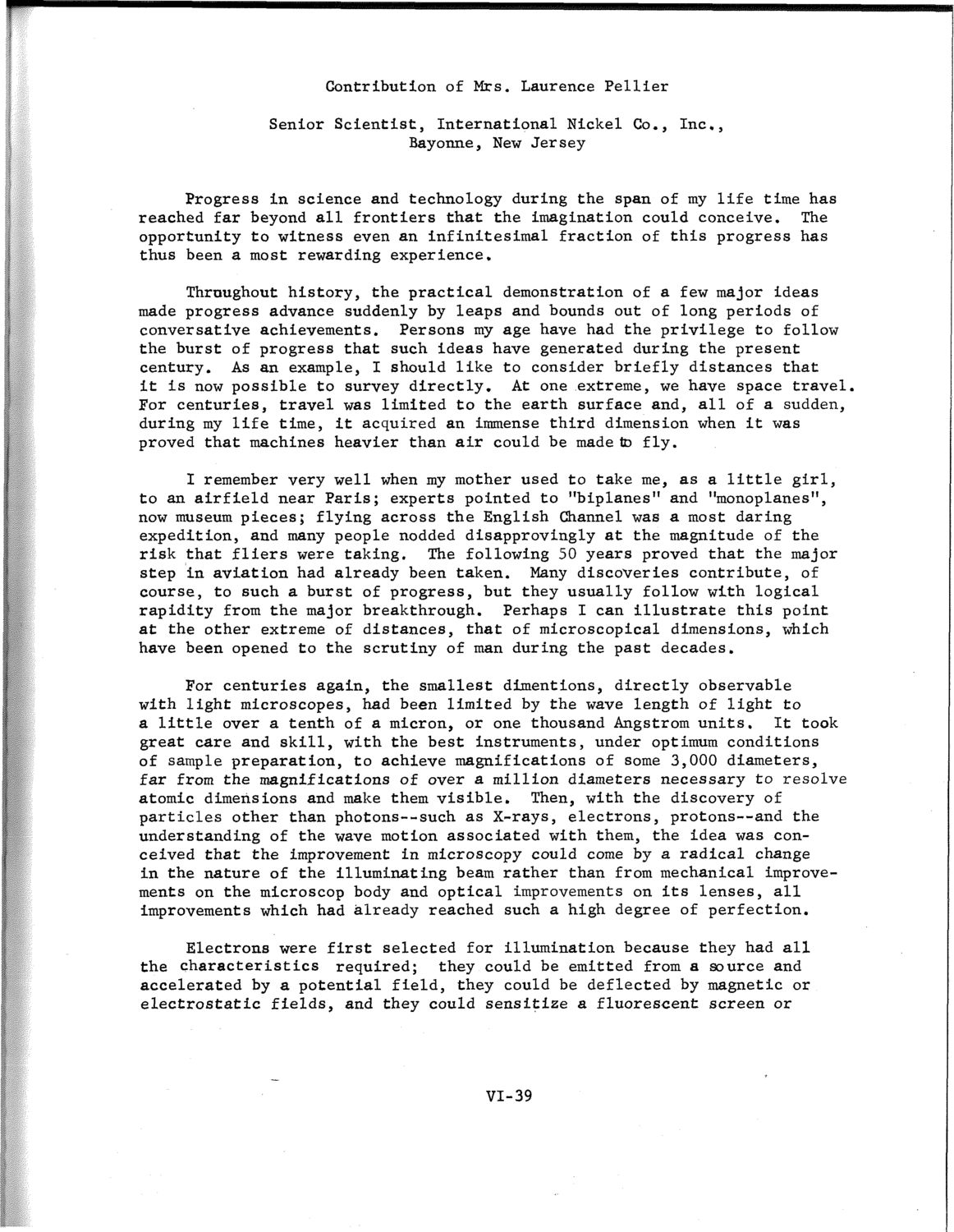| |
| |
Caption: SWE - Proceedings of the First International Conference of Women Engineers and Scientists
This is a reduced-resolution page image for fast online browsing.

EXTRACTED TEXT FROM PAGE:
Contribution of Mrs. Laurence Pellier Senior Scientist, International Nickel Co., Inc., Bayonne, New Jersey Progress in science and technology during the span of my life time has reached far beyond all frontiers that the imagination could conceive. The opportunity to witness even an infinitesimal fraction of this progress has thus been a most rewarding experience. Throughout history, the practical demonstration of a few major ideas made progress advance suddenly by leaps and bounds out of long periods of conversative achievements. Persons my age have had the privilege to follow the burst of progress that such ideas have generated during the present century. As an example, I should like to consider briefly distances that it is now possible to survey directly. At one extreme, we have space travel. For centuries, travel was limited to the earth surface and, all of a sudden, during my life time, it acquired an immense third dimension when it was proved that machines heavier than air could be made to fly. I remember very well when my mother used to take me, as a little girl, to an airfield near Paris; experts pointed to "biplanes" and "monoplanes", now museum pieces; flying across the English Channel was a most daring expedition, and many people nodded disapprovingly at the magnitude of the risk that fliers were taking. The following 50 years proved that the major step in aviation had already been taken. Many discoveries contribute, of course, to such a burst of progress, but they usually follow with logical rapidity from the major breakthrough. Perhaps I can illustrate this point at the other extreme of distances, that of microscopical dimensions, which have been opened to the scrutiny of man during the past decades. For centuries again, the smallest dimentions, directly observable with light microscopes, had been limited by the wave length of light to a little over a tenth of a micron, or one thousand Angstrom units. It took great care and skill, with the best instruments, under optimum conditions of sample preparation, to achieve magnifications of some 3,000 diameters, far from the magnifications of over a million diameters necessary to resolve atomic dimensions and make them visible. Then, with the discovery of particles other than photons--such as X-rays, electrons, protons—and the understanding of the wave motion associated with them, the idea was conceived that the improvement in microscopy could come by a radical change in the nature of the illuminating beam rather than from mechanical improvements on the microscop body and optical improvements on its lenses, all improvements which had already reached such a high degree of perfection. Electrons were first selected for illumination because they had all the characteristics required; they could be emitted from a source and accelerated by a potential field, they could be deflected by magnetic or electrostatic fields, and they could sensitize a fluorescent screen or VI-39
| |